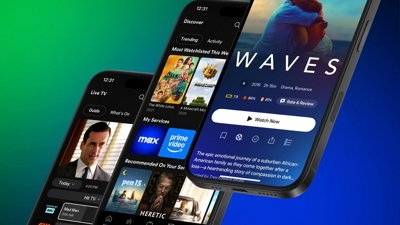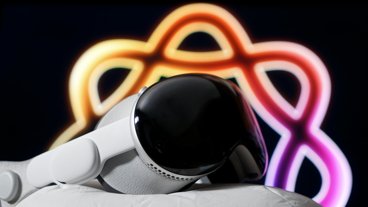In a rare example of the PC's performance tuning culture translating to the Mac, a new utility has surfaced that lets Mac Pro owners overclock their systems beyond Apple's official specifications.
Proven to work by those in the Mac community, the approach also increases the speed of the system bus and the memory as a result, though Apple's choice of hardware ironically suits it better to the process than many gaming-oriented parts for Windows computers: as the Mac Pro must use RAM with error correction, it prevents an excessive overclock from ruining data on the hard drive by making sure that only valid data leaves system memory.
The clock difference is enough to provide a tangible "free" upgrade in performance to the systems, though this isn't always measurable. In synthetic tests such as Geekbench, the software can incorrectly report similar performance even though timing the results proves that they're above what would happen at Apple's officially rated clock speeds.
However, unlike most overclocks, the technique requires a certain degree of trickery and carries an extra amount of risk. The current version of the tool works by loading a kernel extension into Mac OS X on boot that forces the clock speeds upwards immediately after the system starts. Without it, the Mac Pro would immediately revert back to its stock speeds the moment the system is rebooted, according to ZDNet. The initial beta app can also sometimes be overridden when the Mac comes out of sleep mode.
Like most overclocking, the technique is also limited by the nature of the hardware. At present, the German experimenters are unable to push past the 3.24GHz barrier without an inherently unreliable system. The faster processor speeds eventually overwhelm the memory and prevent it from correcting every error, triggering a kernel panic in Mac OS X that forces a reboot. High-performance third-party memory that operates above spec is described as the only real solution to this problem.
System time also falls out of sync without the expected clock rates and can't be corrected even by calibrating the computer online, the testers say. Instead, a reboot is necessary to at least temporarily provide accurate timekeeping.
While very much a beta version and potentially dangerous — the possibility exists that the system won't start up correctly — the utility is the first known that modifies core system performance on Intel-based Macs. Until recently, most overclocking utilities for Macs have dwelt on ramping up clock speeds on video cards to eke out more 3D performance for games.
 Aidan Malley
Aidan Malley






-m.jpg)






 Amber Neely
Amber Neely

 Wesley Hilliard
Wesley Hilliard
 Malcolm Owen
Malcolm Owen

 William Gallagher
William Gallagher










41 Comments
Apple's choice of hardware ironically suits it better to the process than many gaming-oriented parts for Windows computers: as the Mac Pro must use RAM with error correction, it prevents an excessive overclock from ruining data on the hard drive by making sure that only valid data leaves system memory.
Okay, seriously, I stopped reading right there.
Thanks a lot! My 2,8GHz Mac Pro now runs 3,0 GHz =)
The current version of the tool works by loading a kernel extension into Mac OS X on boot that forces the clock speeds upwards immediately after the system starts.
Let me just add some comments:
ZDNet Clock doesn't load a kext at boot time. It is dynamically loaded, when you start ZDNet Clock. After a reboot the kext will never be loaded, until you run ZDNet Clock again. This keeps things safe.
If you reboot without turning the system off (shutdown), the Mac Pro keeps the speed you set with ZDNet Clock. In this case the system time runs at the correct speed and benchmarks report better results, because Mac OS adjusts the system time speed at boot time, but at no time afterwards. Also, the kext is not loaded, because it is needed only to change the bus clock. Once changed the kext can be unloaded.
If you shutdown your computer and turn it on again later it will always run at stock speed. You need to run ZDNet Clock again.
With pre-installed Apple RAM we were able to run a 2,8 GHz Mac Pro at 3,17 GHz 24 hours under full CPU and memory load without a single parity error, that had to be corrected.
Using Kingston or Transcend RAM the same results could be achived at 3,24 GHz. Same specs as Apple RAM.
Some noname RAM showed up errors at 2,83 GHz. A user reported RAM errors at 2,86 GHz using noname modules. One should probably check for parity errors in the system log when using noname RAM, even if the system runs at stock speed.
-Christoph (Author of ZDNet Clock)
I'm usually pretty knowledgeable with technical stuff, but I'm having difficulty understanding why the Mac Pro can't be pushed a lot higher? On the PC side, ever since the release of the original 65nm quad-core parts and especially now with 45nm, people have been pushing 2.4-2.6ghz parts up to 3.6-3.8ghz on air cooling! Is it the Xeon platform's requirement of FB-DIMMs the problem? Or something else that is Mac specific?
I'm usually pretty knowledgeable with technical stuff, but I'm having difficulty understanding why the Mac Pro can't be pushed a lot higher? On the PC side, ever since the release of the original 65nm quad-core parts and especially now with 45nm, people have been pushing 2.4-2.6ghz parts up to 3.6-3.8ghz on air cooling! Is it the Xeon platform's requirement of FB-DIMMs the problem? Or something else that is Mac specific?
The reason for this is, that ZDNet Clock doesn't increase the voltage of the CPU. Running a 2.4 GHz CPU at 3,8 GHz requires about 1.55 V, which may significantly shorten the CPU's life. An E5462 CPU (2.8 GHz) normally runs at 1.1125 V.
In addition to that this would require a new SMC firmware, since Apple computers have an OS-independent fan control.
-Christoph